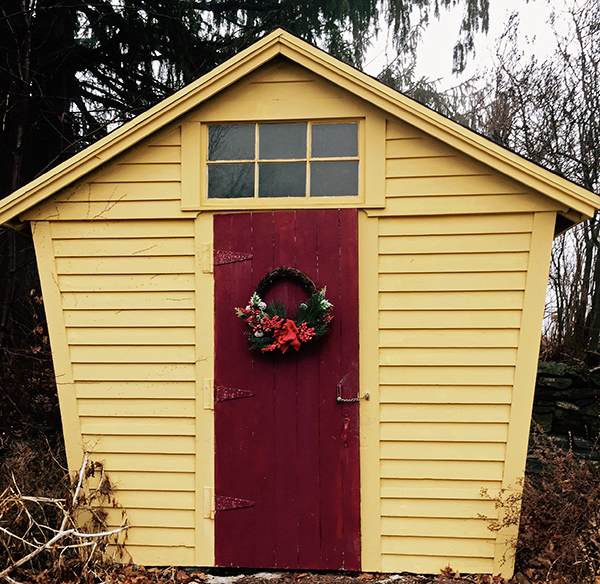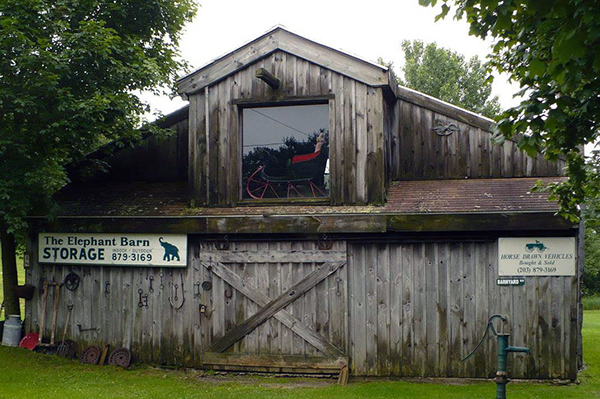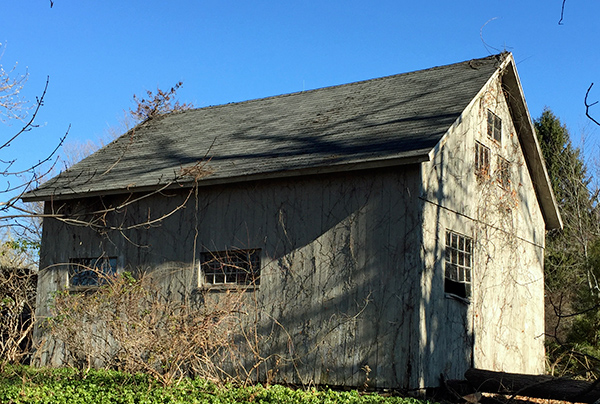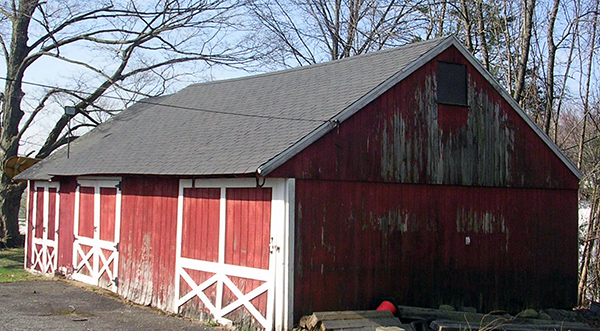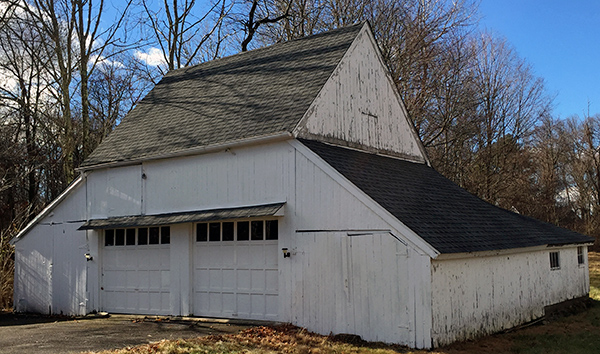|
|
||||||||||||
 |
 |
|
Wolcott Historical Society News - January 2016 By Florence Goodman There is an interesting website called conntecticutbarns.org, which allows you to view the old barns that still exist in our state today. As I perused the site and zeroed in on Wolcott, I quickly realized we have more historic barns in our town than the five that they have listed. This month I will give you a brief history of barns, then begin to discuss the historic barns still standing in our town and where they are located.
Historically, barns have been used for a variety of purposes, which usually determined their size, shape and location on the property. Barns found on a hilly, rocky terrain were usually small and belonged to those hardworking farmers who needed shelter for their animals and crops. Many of these barns were built into areas not suitable for other farming purposes. Larger more stately barns were found in more established areas or where the land was flatter, allowing easier construction. Barns can be classified into the following categories: English, New England, Bank, Connected, and Gambrel and many barns will fall into several of these categories. For a description of these types of barns go to the above stated website,
We have had many of these various types of barns in our rural town from its establishment and into the present day. Farming was a way of life for most of the early settlers of Wolcott, but it was not an easy task because of our topography. All one has to do is look at the old stone walls that border so many properties around town and you quickly realize that those rocks were dug from the thin, rocky soil during the process of tilling the land. This land was far from ideal for growing crops, but those early farmers did just that. Their crops were mainly grown for family use and for bartering purposes. These farmers also raised cattle, dairy cows, chickens, ducks and pigs for the same purpose and needed barns to house their animals, agricultural products and farm equipment.
The five barns that are listed on the barn website are the Abijah Fenn barn on Bound Line Road, the "Elephant Barn," on Center Street, Darius Wiard barn on Farmingbury Road, Daniel Tuttle barn on Kenea Ave and the Wakelee barn on Wakelee Road. I will briefly discuss each of these barns in this edition, but I will also list the other barns still standing in our town that come to my mind. Those barns not listed in the survey are the Charles C. Rogers Maple Hill Farm barn and Passuck Farm barn on Bound Line Road; Soloman Alcott Barn on Beach Road; Rufus Norton barn on Beecher Road; Josiah Atkins House barn, Homewood Farm barns and Mark Tuttle attached barn on Center Street; Brown's barn on Nichols Road; Obed Alcott attached barn, James Alcott barns, Anson G. Lane barn on Spindle Hill Road; Todd barns, one on Todd Road and one on Woodtick Road; Atwood barn, Bock/Echo farm barn and McVerry Barn on Woodtick Road; and Samuelson barn on Central Avenue. If my readers can think of other barns, please let me know and I will add them to the list.
The first barn shown on the barn survey is located behind the Abijah Fenn Store at 339 Bound Line Road. This house was built in 1798 to serve as a general store, blacksmith and wheelwright shop so one can assume that the barn was probably used as part of the blacksmith and wheelwright shops. In 1800 Moses Todd bought the property and he later sold it to the partnership of Benham and Tuttle who ran a business on the property for many years. In the 1880s the house was converted into a residence. The barn, which appears to be in good shape, is still standing today and is probably used as a garage and for storage.
The next barn on the list is found at 48 Center Street and is referred to as the Elephant Barn. This pine timber barn was built circa 1936 and first owned by Theresa Latina. It was later sold to Anita Kellogg who raised pigs on the property. John Washburne was the next owner of the property and then in 1977 Dave Shea took ownership of the barn and property. During the early 1970s the barn was used to store circus elephants and camels and thus the name the "Elephant Barn." The barn also housed horse-drawn buggies and sleighs that Dave bought and sold. Today the barn is still owned by the Shea family and is used to house antiques and collectibles.
The third barn on the list is found at 1 Farmingbury Road and is part of the Darius Wiard House that was built in 1797. Several well-known early families owned this property. In 1887 the Bronson family took ownership and the property remained in that family until 1970 when it was sold to the DeNarcgena family. The English style barn has not been used for many years, but was probably used to house animals and farm products and equipment. The property was recently sold and the new owners are hoping to restore the barn.
The fourth barn is found down the road at 4 Kenea Avenue at the Daniel Tuttle House, which was built in 1792 by Daniel Tuttle who was a carpenter. Tuttle lived in the house for five years then sold the farm to Asoph Hotchkiss. This property also housed a store and a local post office in the 1800s. The small barn that is found at this location was used as a corncrib.
The last barn on the list is found at 16 Wakelee Road and was part of the Almus Wakelee House and property built in 1835. This is the last Wakelee barn still standing and was part of the large parcel of land that the Wakelee family owned since 1727. Much of the Wakelee property was used as farmland and several large barns were built on the property. Today this property is owned by Joseph Dunne and is used for storage.
These are the five barns found on the Connecticut Barn Survey, but as I mentioned earlier, there are many other barns still standing in our town and I would like to continue with this topic next month. If you have knowledge of any old barns in our town, please contact me at fjgtdg@gmail.com or call me at 203-879-9818.
(Information for this article was taken from The 175th Anniversary 1796-1971 by John Washburne, The 1986 Historic Resources Inventory by Paul Loether, and The Hartford Courant, January 19, 1989 article.)
Daniel Tuttle Corncrib, 4 Kenea Avenue.
Elephant Barn, 48 Center Street.
Darius Wiard Barn, 1 Farmingbury Road.
Wakelee Barn, 16 Wakelee Road.
Abijah Fenn Barn, 339 Bound Line Road.
To view past installments of the Wolcott Historical Society News, click here.
|
|
|
[Home]
[News]
[Purpose]
[Calendar]
[Museum]
[Membership]
[History]
[Contacts]
[Links]
All material at Wolcott Historical Society Web sites Copyright © 2000-2016 Wolcott Historical Society |
